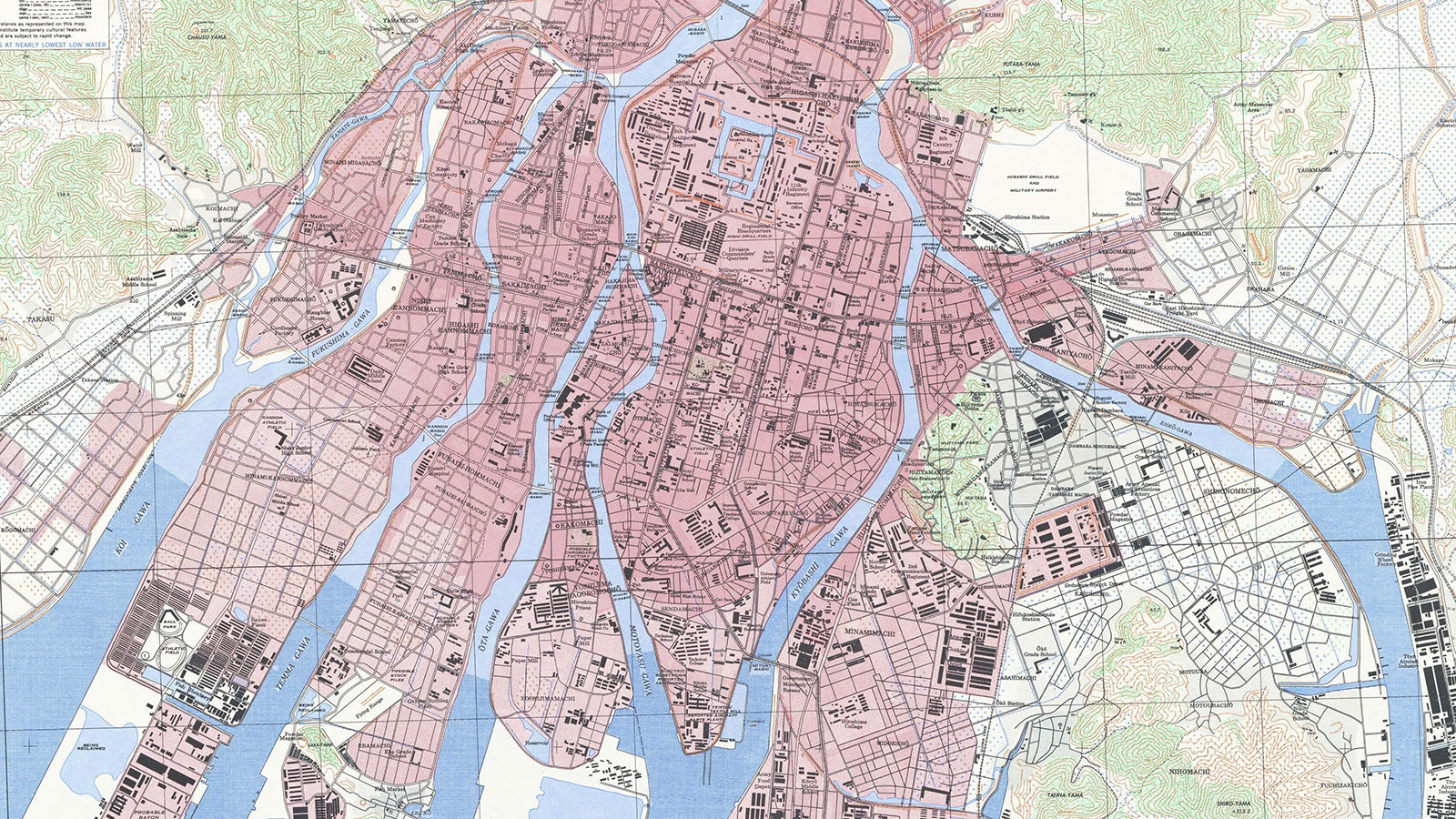Mapping Hiroshima
GIS and Historical Memory

The name of a city.
One hears the word and wants to know more, but one also wants to forget it. One has heard both too much and not enough about Hiroshima. For the city evokes our entire nuclear nightmare, and any study of it must begin with this symbolic invocation. Its literal meaning, “broad island,” suggests little more than the city’s relationship to rivers and to the sea. Does one care about the literal meaning of Carthage, Troy, Sparta, Ch’ang An, Lidice, or Coventry? What Hiroshima does convey to us—indeed press upon us—is the realization that it actually happened and the implication that it could happen in again.
— Robert Jay Lifton, Death in Life: Survivors of Hiroshima (1968)
Even the casual reader of the testimonial literature about the atomic bombing of Hiroshima will quickly notice a peculiar, if not entirely unexpected feature: the preponderance of place-names that punctuate these texts—a level of geographical detail down to the level of neighborhoods, sub-neighborhoods, streets. and buildings. The text most familiar to American audiences, John Hersey’s Hiroshima (1946), most certainly does this in the testimony of its survivors: their accounts of the aftermath frequently involve wandering around the ruins of the city, trying to get from place to place, so an attention to geographical specificity is perhaps to be expected. But, to that American audience at least, most of these places are likely to be unknown—foreign, exotic, relics of a bygone era in a destroyed city.
I used to teach an undergraduate research seminar on representations of the atomic bombing at Case Western Reserve University. We read Hersey, but also the poetry to Tōge Sankichi and Ōta Yōko, and watched the original version of Gojira (1954), among other things. But my students and I were drawn to another text, Ibuse Masuji’s Black Rain (1968), which might be said to be the Japanese counterpart to Hersey’s American account. And in this text, the tendency towards place-names is prevalent. At the time, I was also getting interested in geospatial information systems (GIS) and mapping as a form of visual argumentation, so, with help from a grant from the Freedman Center for Digital Technology and my trusty research assistant Eric Earnhardt (now a Dean at Germanna Community College!), I set about tracking down all of Ibuse’s place-names, to see what, if anything, the novel’s attention to geography could tell us about how to read it, and how it means.

